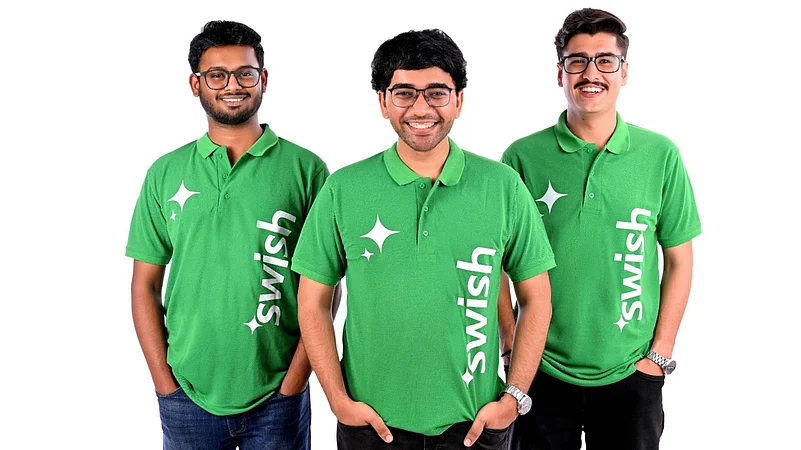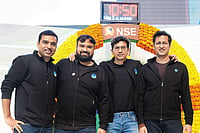After quick commerce, 10-minute food delivery is now the next big venture. Food delivery start-up Swish recently raised a $2 million seed funding round led by Accel. Others who participated in the round include founders of Urban Company Abhiraj Bhal and Varun Khaitan, former Swiggy Instamart head Karthik Gurumurthy, and others.
The platform is currently live in a few areas in Bangalore and plans to expand to four more areas by the end of this month, said Swish co-founder Aniket Shah to Outlook Business.
The company claims that it was founded in 2024 by Aniket Shah, Ujjwal Sukheja, and Saran S to fill a gap in the food delivery industry by offering a hyperlocal service to satisfy spontaneous cravings.
“We are currently living in a few areas in Bangalore and plan to expand to four more areas by the end of this month. We aim to have around 150 "Delight Centers" (our version of cloud kitchens) by the end of March 2025,” added Shah.
So, how is it possible to deliver food in ten minutes? Whenever a company opts for ten-minute food delivery, they have to cater to a small radius of 2-4 km and provide food items that can be made easily, like coffee and other snacks.
“The idea is to test if a small part of the food delivery space—like quick deliveries with a limited menu—can meet customer demand for convenience. This model could potentially capture 10-20 percent of the food delivery market,” said Satish Meena, an independent e-commerce analyst and advisor at Datum Intelligence.
Shah said that it is a complex process, but they have optimized every step of their operations. The company claims that they run modified cloud kitchens and control the entire process from food preparation, packaging, delivery, and order assignment.
“This allows us to ensure that food is delivered in the best possible condition—hot and hygienic—within a very short radius, typically 1.5 to 2 kilometers. Our main focus is on delivering high-quality food as quickly as possible,” added Shah.
People tend to crave food more than any other product category, which is why the company wanted to address this demand with a 10-minute delivery model, said Shah. “In the food delivery space, delivery times were typically between 30 and 60 minutes, which falls short of what customers expect, especially when it comes to their food cravings,” he added.
Currently the company’s menu is limited to around 70 to 80 items on the app, including beverages, snacks, and meals. They are also planning to introduce pizza soon. On being asked if the menu will be limited, Shah said, “While our menu is focused on items that can be quickly prepared, we believe that we’ll be able to expand to more categories as we grow.”
Swish isn’t the only platform that is focusing on 10-minute food delivery. Zomato CEO Deepinder Goyal recently reportedly said that 10-minute food delivery would be a game changer. Zomato did come up with its 10-minute model with the launch of Zomato Instant in February 2022. In 2023, there were reports that Instant was shutting down. However, the company clarified that they are rebranding.
Now, Zomato Everyday (changed from Instant), which provides home-cooked meal service, focuses on the 10-minute delivery timing. “We're not marketing it as 10-minute because back then, before we changed the brand name (from Instant to Everyday), there was so much noise that we’re making the riders run/ride faster for 10 minutes,” Goyal told Moneycontrol.
The concept of 10-minute food delivery did face a lot of criticism when it was launched by Zomato. Questions were raised by many about the safety of gig workers. Following this, Goyal wrote in a blog post, “The delivery partners are not informed of the promised time of delivery. Time optimization does not happen on the road and does not put any lives at risk.”
Meanwhile, Swiggy launched a new service called Bolt in October, which focuses on delivering food within 10 to 15 minutes. “Ten years ago, Swiggy revolutionized food delivery by cutting average wait times to 30 minutes. Now, we’re reducing that wait even further for frequently ordered items like coffee, burgers, ice cream, and biryani, partnering with trusted restaurants to deliver the best food in just 10 minutes,” said Rohit Kapoor, CEO of Swiggy’s Food Marketplace, in a statement.
Zepto also joined the race with the launch of its cafe service in April 2022. Now, the company plans to expand to major cities and aims to target revenue of Rs 1,000 crore by 2026. "The response has been phenomenal, with Zepto Cafe now achieving an (estimated) Annual Run Rate (ARR) GMV of Rs 160 crore with just 15 percent of our expanding dark store network with proven unit economics,” said Zepto CEO Aadit Palicha as per PTI.
With the model gaining popularity, experts indicate that there will be more investment in this space. “There will likely be more smaller investments in this area, around 2 to 4 million dollars. Everyone is testing to see if this model can scale. The hypothesis is that some portion of food delivery can be shifted to this quick delivery model, where customers are willing to pay for convenience,” added Meena.
However, the entire food delivery model won’t shift to 10 minutes. The key difference here is that it’s not about speeding up traditional delivery models, add experts.
“Many companies have invested in cloud kitchens, but not all have succeeded. Rebel Foods and Box8 are exceptions, but many are struggling. The idea is to test if a small part of the food delivery space—like quick deliveries with a limited menu—can meet customer demand for convenience,” said Meena.
India’s love for quick delivery has been increasing. A report by Datum Intelligence says that the quick commerce market is expected to reach $40 billion by 2030. With people opting for quick delivery, it will be interesting to see how the 10-minute food delivery platform performs in the country.































